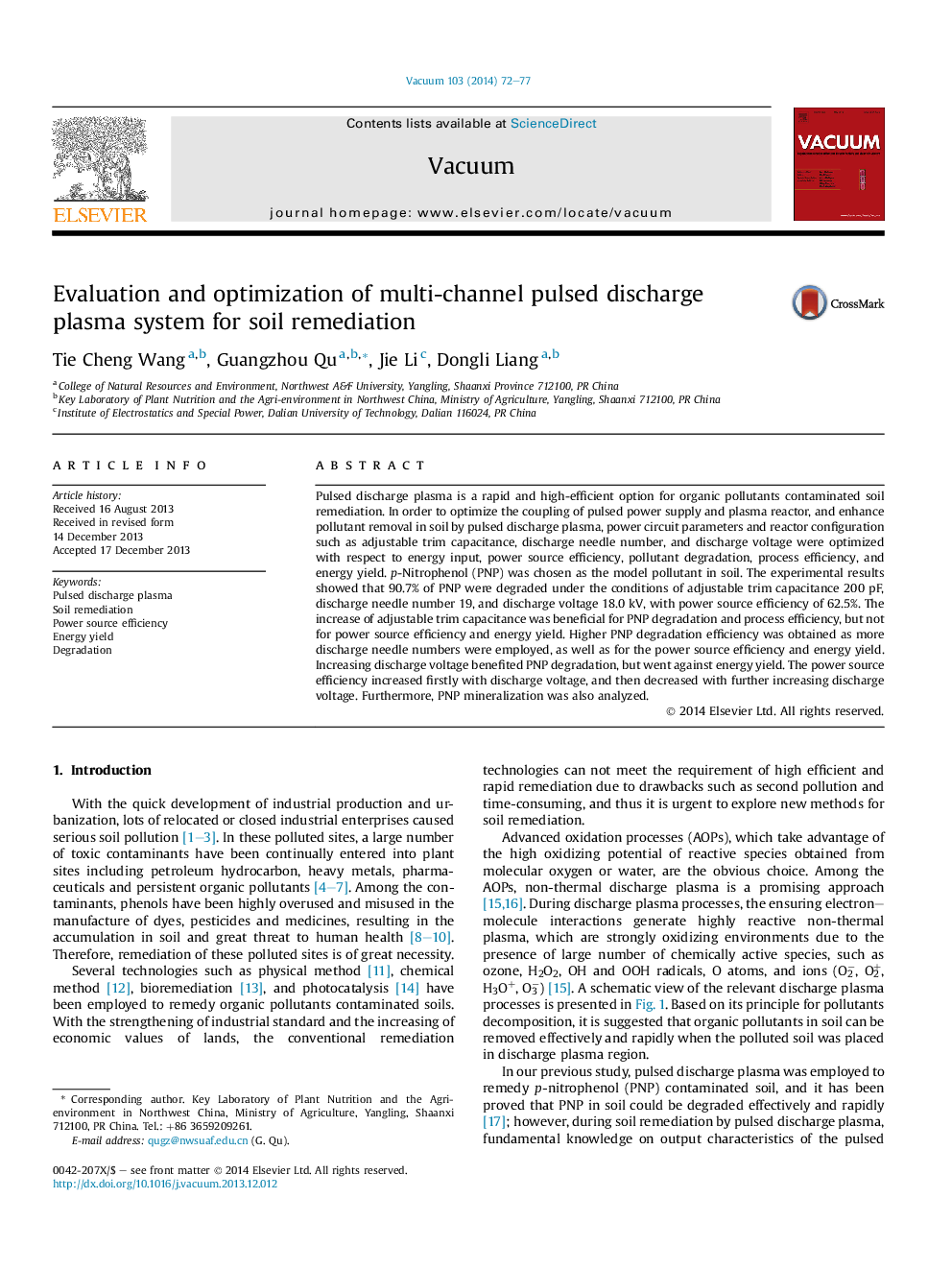| Article ID | Journal | Published Year | Pages | File Type |
|---|---|---|---|---|
| 1688355 | Vacuum | 2014 | 6 Pages |
•Effect of pulse discharge plasma system circuit parameters on PNP removal was studied.•Improving adjustable trim capacitance benefits PNP removal and harms energy utilization.•More discharge electrodes of reactor benefits PNP removal and energy utilization.
Pulsed discharge plasma is a rapid and high-efficient option for organic pollutants contaminated soil remediation. In order to optimize the coupling of pulsed power supply and plasma reactor, and enhance pollutant removal in soil by pulsed discharge plasma, power circuit parameters and reactor configuration such as adjustable trim capacitance, discharge needle number, and discharge voltage were optimized with respect to energy input, power source efficiency, pollutant degradation, process efficiency, and energy yield. p-Nitrophenol (PNP) was chosen as the model pollutant in soil. The experimental results showed that 90.7% of PNP were degraded under the conditions of adjustable trim capacitance 200 pF, discharge needle number 19, and discharge voltage 18.0 kV, with power source efficiency of 62.5%. The increase of adjustable trim capacitance was beneficial for PNP degradation and process efficiency, but not for power source efficiency and energy yield. Higher PNP degradation efficiency was obtained as more discharge needle numbers were employed, as well as for the power source efficiency and energy yield. Increasing discharge voltage benefited PNP degradation, but went against energy yield. The power source efficiency increased firstly with discharge voltage, and then decreased with further increasing discharge voltage. Furthermore, PNP mineralization was also analyzed.
